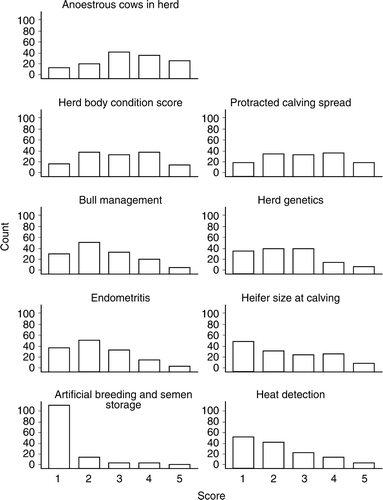Figures & data
Table 1. Summary statistics for biophysical variables from 133 seasonal-calving, pasture-based dairy herds from four regions in New Zealand, enrolled in the National Herd Fertility Study during 2009, presented for all herds in the study, and for herds in the study by region, compared with published industry meansa.
Table 2. Summary statistics for demographic variables for farms and key decision makers (KDM) from 133 seasonal-calving, pasture-based dairy herds from four regions in New Zealand, enrolled in the National Herd Fertility Study during 2009, presented for all herds in the study, and for herds in the study by region.
Figure 1. Distribution of responses by key decision makers managing 133 seasonal-calving, pasture-based dairy herds from four regions in New Zealand, enrolled in the National Herd Fertility Study during 2009, asked to rate their attitude in relation to personality traits, using a Likert-type scale, where 1 = very low and 5 = very high.
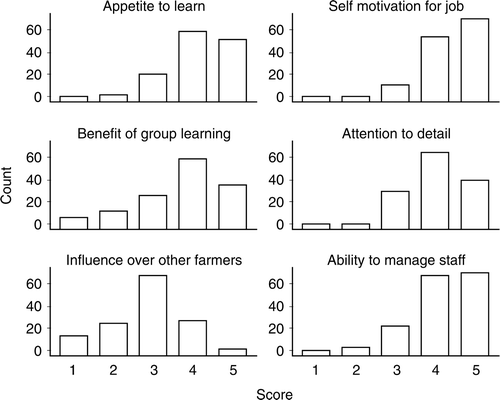
Figure 2. Distribution of responses by key decision makers managing 133 seasonal-calving, pasture-based dairy herds from four regions in New Zealand, enrolled in the National Herd Fertility Study during 2009, asked to rate the importance of farm management practices or likelihood of them trying unproven ideas or technologies, using a Likert-type scale, where 1 = very low and 5 = very high.
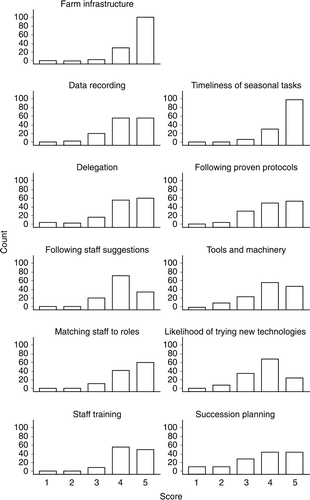
Figure 3. Distribution of responses by key decision makers managing 133 seasonal-calving, pasture-based dairy herds from four regions in New Zealand, enrolled in the National Herd Fertility Study during 2009, asked to rate the current genetic quality, milksolids performance and reproductive performance of their herd, using a Likert-type scale, where 1 = very low and 5 = very high.
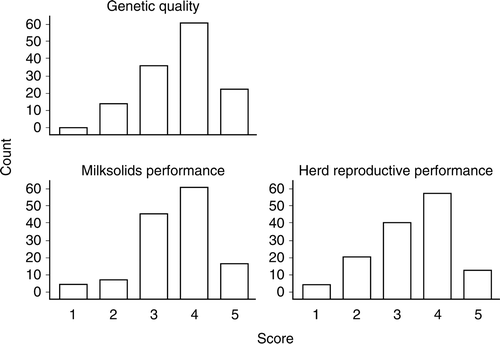
Figure 4. Distribution of responses by key decision makers managing 133 seasonal-calving, pasture-based dairy herds from four regions in New Zealand, enrolled in the National Herd Fertility Study during 2009, asked to rate their management priorities over the next 3 years, using a Likert-type scale, where 1 = very low and 5 = very high.
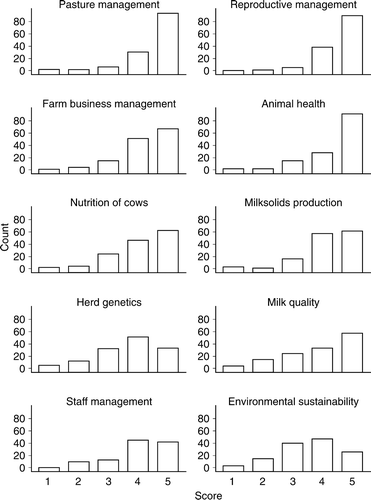
Figure 5. Distribution of responses by key decision makers managing 133 seasonal-calving, pasture-based dairy herds from four regions in New Zealand, enrolled in the National Herd Fertility Study during 2009, asked to rate the likelihood of factors being a constraint to the reproductive performance of their herd over the previous 2 years, using a Likert-type scale, where 1 = very low and 5 = very high.
